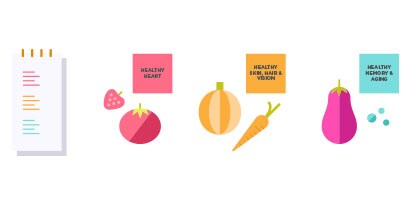
-
While color itself doesn’t have a taste, it can affect how we perceive the taste of the food we eat. Because our brains often process colors before we process any other cues, we tend to have an ingrained concept of food based on its color.It’s so deep, in fact, that in one study green-colored drinks were perceived by a majority of people to taste like lime even through the drinks were made from cherries.
For our ancestors, attraction to certain food colors meant increased survival. That’s because nature has a unique way of highlighting nutrients in foods by making the colors even more spectacular. There’s a reason we like our mangoes, carrots and peppers to be nice and orange—it means they’re more ripe, taste better and are loaded with the pigment beta-carotene our bodies crave for overall health benefits.
Activity
-

Reading food labels and trying to learn about the health benefits of every food can be overwhelming. By color-coding foods, it makes it easier to quickly comprehend their health benefits and makes shopping easier, too. Try to organize your next shopping trip in terms of color, noting the health benefits of each color segment!
Red foods like tomatoes, strawberries and peppers, are considered good for heart health. Orange foods like carrots, squash and pumpkin, are considered good for healthy skin, hair and vision. Blue and purple foods like eggplant and blueberries, are considered good for memory and healthy aging.
How did color-coding make your grocery shopping more effective?
Share your experience on Facebook for exceptional karma points.

